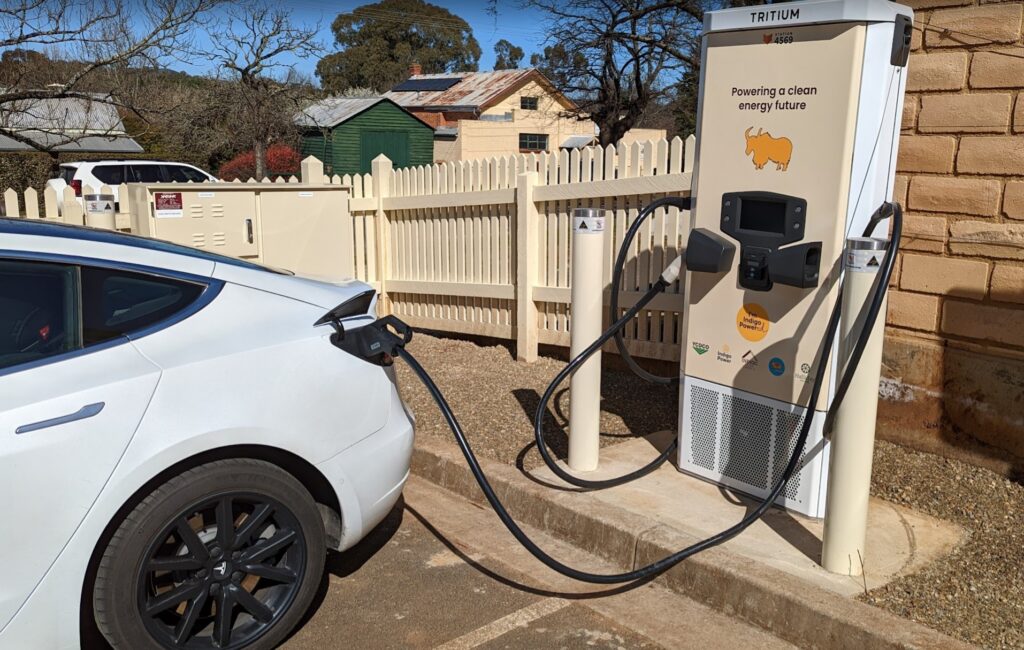Today the Australian Financial Review published a scathing article about EV charger business Tritium. The article suggests that Tritium, a business that started in Brisbane but has since expanded internationally, is struggling to make ends meet.
The report says Tritium is struggling for cash, asking the Queensland Government for a $90 Million investment.
Jane Hunter joined the company in 2019 as the COO and by March 2020, she was the CEO and Executive Director. Hunter suggests that US Government grants that Tritium could potentially leverage, are not available until January, and that would be too late for them, suggesting just how critical the financial situation is at Tritium.
On the surface, Tritium should be well positioned to be flying high right now, with investment in EV charging infrastructure higher than ever. Demand for EVs continues to grow, despite a few announcements by legacy automakers this week that they are slowing their migration to EVs due to internal financial pressures.
The charging infrastructure space in Australia is a rapidly evolving landscape, with early entrants like Tesla rolling their own hardware, while the larger charging networks Chargefox, NRMA and Evie Networks both buy hardware from Tritium.
Since then, the competition has arrived, with the charging networks not going exclusively with one provider, instead choosing to diversify. It seems the chargers deployed by JOLT, GetElectric, Shell, BP Pulse and others tend to deploy chargers from a variety of charger manufacturers.
Adding to the challenges for the company is a growing set of negative reviews from EV owners who arrive at charging locations, only to find chargers out of order and more often than not, it’s a Tritium Charger that is out of order.

Funding for the deployment of EV charging infrastructure had definitely been prioritised to solve the chick and egg problem for EV adoption, but unfortunately, the dollars didn’t come with requirements around reliability numbers. Those charging network providers (which co-branded so do deserve some criticism), also struggled to get replacement parts with some locations being offline for weeks at a time.
I think we expect that an Australian-based manufacturer would be able to support parts to their hardware in Australia, but this was during a time when the company set its eyes on international expansion and perhaps grew faster than their revenue would support.
As recently as October 4th, Tritium announced a new order of 200 Fast Chargers, and in September, Tritium announced they had secured a funding round of up to $75 million, with an initial funding of $25 million. At the time, Tritum said the company intended to use it to continue its investment in working capital to meet expected continued strong customer demand in the 2024 calendar year.
By October 18th, Tritium’s share price continued to tumble and is now being asked by NASDAQ to increase the price or they’ll be removed from the platform. If this occurs, confidence in investing the company will be dramatically impacted.
In accordance with Nasdaq Listing Rule 5810(c)(3)(A), Tritum has 180 calendar days (about 167 now) from the date of such notice, or until April 9, 2024, to regain compliance with the minimum bid price requirement. To regain compliance, the bid price for the Company’s Ordinary Shares must close at $1.00 per share or more for a minimum of 10 consecutive business days or the Company may be eligible for an additional period of 180 calendar days to regain compliance.
This could be one of the biggest falls from grace we’ve ever seen from an Aussie success story that rose to international success and somehow managed to lose momentum, investment opportunities and potentially the future viability of their company.
This is the kind of thing accounting books are written about, but while many will likely point to increased costs impacting the business model, I think competition and poor management are more likely the real cause of where Tritum finds themselves in late 2023.
I really hope they can turn things around by focusing on making the best products possible at the best price possible. The road ahead is a challenging one, particularly when other competitors like Tesla are building charging infrastructure at much lower cost and running at close to 100% uptime, along with opening their Supercharger network to all EV brands, the game changes and it seems Tritum hasn’t responded.

The decisions made by mgt have been a disaster. The CEO should be removed for sure. Also, the company could actually communicate with investors, which it has not, about how they will get out of this mess. In the near term, if the BOD or corporate officers believed in the company ata all, they should be buying shares hand over fist at these prices. But no, they can’t even do something simple like that. That alone would double the stock price.